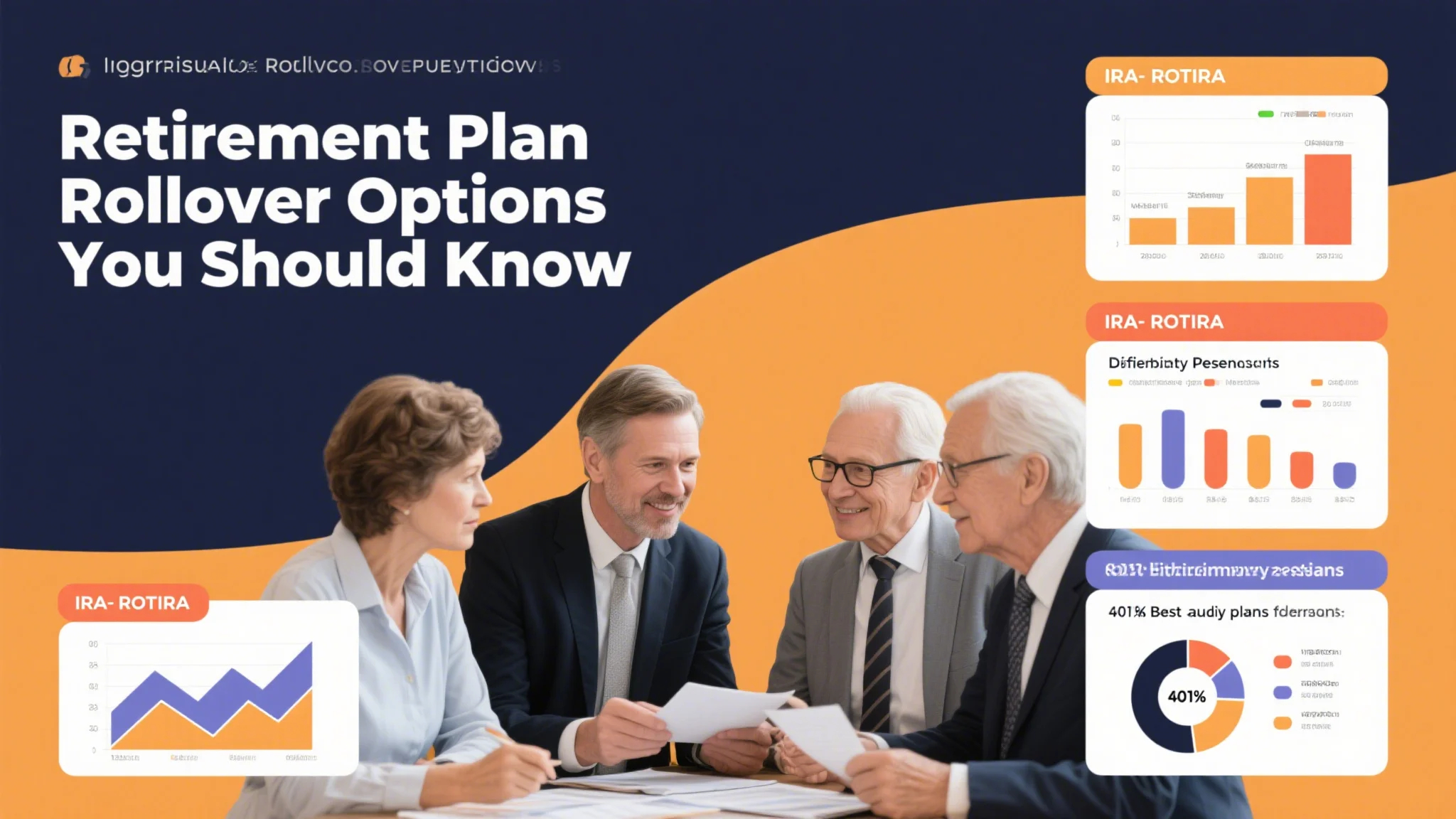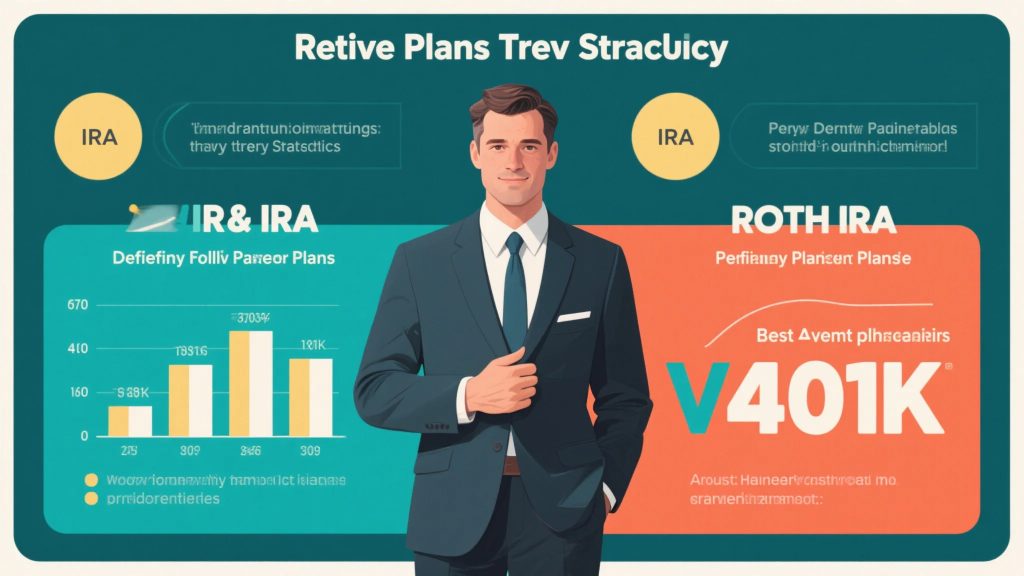
Retirement Plan Rollover Options You Should Know
Understanding Retirement Account Transitions
Navigating retirement plan rollover options is crucial when changing jobs or approaching retirement. Direct rollovers between similar account types (traditional to traditional, Roth to Roth) avoid tax penalties, while indirect rollovers must be completed within 60 days to prevent taxable distributions. Consolidating multiple retirement accounts can simplify management but may limit investment choices depending on the new custodian.
When leaving an employer, you typically have four options: leave funds in the existing plan (if permitted), roll over to a new employer’s plan, transfer to an IRA, or take a cash distribution (which incurs taxes and penalties). Each option has distinct advantages regarding investment options, fees, creditor protection, and future withdrawal flexibility. Professional guidance is particularly valuable when dealing with company stock in retirement plans, which may qualify for special tax treatment under Net Unrealized Appreciation (NUA) rules.
Comparing Traditional and Roth Options
The IRA vs Roth IRA decision significantly impacts rollover strategies. Traditional IRAs offer immediate tax deductions but require paying taxes on withdrawals, while Roth accounts provide tax-free growth potential. Roth conversions during low-income years can be particularly advantageous, though they trigger taxable events. The five-year rule for Roth accounts applies separately to each conversion, creating potential complications if not properly tracked.
Rollovers from traditional 401(k)s to Roth IRAs require careful tax planning, as the entire converted amount counts as taxable income. This strategy works best when you can pay the conversion taxes from outside funds rather than withholding from the rollover amount. State tax considerations add another layer of complexity, as some states tax retirement income differently or offer exemptions for certain types of retirement account withdrawals.

Pension Plan Considerations
While increasingly rare in private industry, defined benefit pension plans remain important for public sector employees. These plans typically offer choices between lump-sum payouts and various annuity options. Lump sums provide flexibility but transfer investment and longevity risk to the employee, while annuities guarantee lifetime income but sacrifice liquidity and potential legacy benefits.
Pension recipients considering rollovers should evaluate the plan’s funding status, as underfunded plans may face benefit reductions. The Pension Benefit Guaranty Corporation (PBGC) insures most private pensions up to certain limits, but government pensions have varying levels of protection. Comparing the present value of pension payments against potential investment returns from a rollover requires sophisticated analysis of life expectancy, investment assumptions, and personal risk tolerance.
Workplace Plan vs. IRA Tradeoffs
The pension vs 401k comparison highlights fundamental differences in retirement approaches. Modern 401(k)s often allow rollovers into the plan from previous employers’ retirement accounts, which may offer advantages like earlier penalty-free withdrawals (age 55 vs. 59½ for IRAs) and potentially better creditor protection under federal law. However, IRAs typically provide broader investment choices and sometimes lower fees.
Some employer plans offer unique features like stable value funds or institutional-class investments unavailable to retail investors. Others might restrict access to certain asset classes or charge higher administrative fees. Required Minimum Distribution (RMD) rules also differ slightly between workplace plans and IRAs, particularly for still-working employees over age 73 who may delay RMDs from their current employer’s plan.
Annuities as Rollover Destinations
Evaluating the best annuity plans for retirees includes considering rollover options into insurance products. Fixed annuities can provide predictable income similar to pensions, while variable annuities offer growth potential with more risk. Qualified Longevity Annuity Contracts (QLACs) allow using retirement funds to purchase deferred income annuities that begin payments later in life (up to age 85), with the added benefit of excluding the QLAC value from RMD calculations.
Annuity rollovers require careful evaluation of fees, surrender charges, and benefit riders. Many annuities have lengthy surrender periods (7-10 years) with substantial penalties for early withdrawals. Living benefit riders that guarantee minimum withdrawals or account values can provide valuable protections but add to the product’s cost. Comparing annuity options against keeping funds in diversified investment portfolios requires careful analysis of personal circumstances and retirement goals.
Tax Implications of Rollovers
Rollovers between different account types create varying tax consequences. Traditional to Roth conversions generate taxable income, while same-type transfers avoid immediate taxes. State tax laws add complexity, as some states exempt retirement income or offer special treatment for certain types of accounts. NUA strategies for company stock in 401(k)s can provide significant tax savings but require precise execution.
Timing rollovers to coincide with low-income years can minimize tax impacts. The pro-rata rule complicates partial Roth conversions from traditional IRAs containing both deductible and nondeductible contributions. Required tax withholding on indirect rollovers (typically 20% for employer plans) creates potential pitfalls if not properly accounted for in the rollover process.
Creditor Protection Considerations
Retirement accounts enjoy different levels of protection from creditors depending on account type and governing law. ERISA-qualified plans like 401(k)s receive unlimited federal protection from bankruptcy creditors and strong protection against other claims in most states. IRA protections vary by state, with some offering unlimited protection and others capping exempt amounts.
Rollovers from ERISA plans to IRAs generally maintain federal bankruptcy protection if properly documented, but non-bankruptcy creditor protection depends on state law. Inherited IRAs receive varying levels of protection, with some court rulings denying creditor protection altogether. These legal nuances make professional advice essential when rolling over retirement accounts in situations involving potential creditor risks.
Legacy Planning Aspects
Rollover decisions significantly impact estate planning. The SECURE Act changed inherited retirement account rules, generally requiring most non-spouse beneficiaries to empty accounts within ten years. Roth accounts have become more attractive for legacy planning since beneficiaries inherit them tax-free. Trusts as retirement account beneficiaries require careful drafting to avoid accelerating distributions or creating tax problems.
Charitable remainder trusts can receive retirement assets, providing income streams while supporting causes you care about. Qualified Charitable Distributions (QCDs) from IRAs allow direct transfers to charities that satisfy RMD requirements without counting as taxable income. Coordinating rollovers with overall estate plans ensures your retirement assets transfer according to your wishes while minimizing taxes and legal complications.


